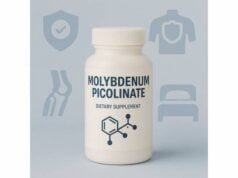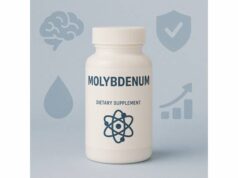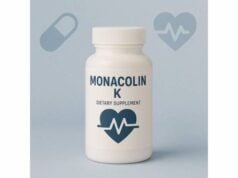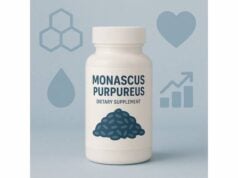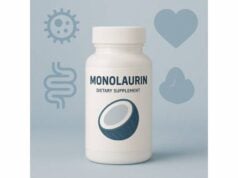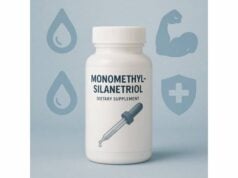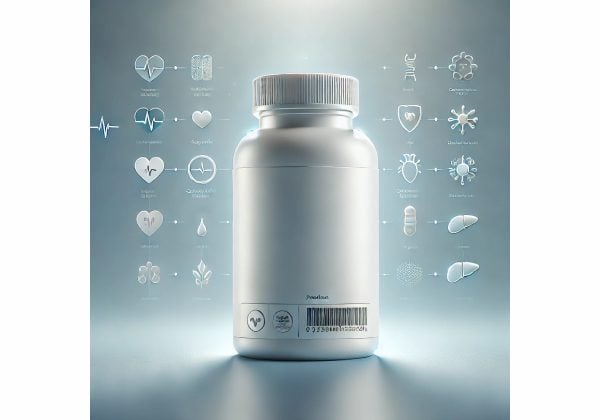
Myristoleic acid (C14:1 n-5; cis-9-tetradecenoic acid) is a rare monounsaturated fatty acid that appears in tiny amounts in certain foods and botanicals and is also made inside the body from myristic acid by the enzyme stearoyl-CoA desaturase. Interest in this molecule comes from three places: basic biology (how cells make and use monounsaturated fats), early laboratory findings suggesting antimicrobial and anticancer activity, and a 2020 animal study linking gut-microbe-derived myristoleic acid to brown fat activation. Yet myristoleic acid is not an essential nutrient, has no established daily requirement, and is not routinely prescribed as a standalone supplement. For most people, the practical question is not “How do I take myristoleic acid?” but rather “What do the findings mean for diet, safety, and real-world health choices?”
This guide translates the science into plain language. You will learn what myristoleic acid is, where it comes from, what the best-available evidence shows (and does not show), how to think about dosage and timing, which mistakes to avoid, and who should be cautious. The goal is to give you a balanced, people-first overview that helps you make informed decisions without hype.
Quick Overview
- May influence metabolic pathways in animals via brown fat activation and shows in-vitro antibiofilm and prostate-cell effects.
- Evidence in humans is limited; treat all benefits as preliminary and avoid high-dose standalone products.
- No established supplemental dose; practical target is 0 mg/day as a supplement and obtain fats from food with most fat calories from unsaturated sources.
- People with hormone-sensitive conditions, those on experimental regimens, and anyone pregnant or breastfeeding should avoid isolated myristoleic acid supplements.
Table of Contents
- What is myristoleic acid and how it works
- What benefits are realistic right now
- How to use it safely in real life
- How much to take and when
- Side effects, interactions, and who should avoid
- Evidence at a glance and FAQs
What is myristoleic acid and how it works
Myristoleic acid is a 14-carbon monounsaturated fatty acid with a single double bond at the ninth carbon (cis-9). Chemically, it sits in the same family as oleic acid (C18:1 n-9) and palmitoleic acid (C16:1 n-7), but it is less common in nature and appears only in trace amounts in most diets. It is produced endogenously when stearoyl-CoA desaturase (SCD1) inserts a double bond into myristic acid (C14:0). This conversion matters because the proportion of saturated and monounsaturated fatty acids influences membrane fluidity, cellular signaling, and lipid handling in liver, intestine, and adipose tissues.
Where it is found
- Endogenous production: Most of the myristoleic acid detected in human tissues is synthesized internally from myristic acid via SCD1. Genes and diet influence SCD1 activity, but there is no need to “feed” the pathway with a supplement; normal mixed diets already supply ample substrate.
- Foods: Small amounts appear in dairy fat and certain botanicals. Saw palmetto (Serenoa repens) oil contains a mixture of fatty acids in which myristoleic acid is a minor component. Because amounts are tiny and vary by source, there is no reliable way to “dose” myristoleic acid from common foods.
- Microbial production: Specific gut bacteria can produce long-chain monounsaturated fatty acids, including myristoleic acid, under certain conditions. This area is new and mechanistic rather than prescriptive.
How it functions biologically
- Membrane fine-tuning: As a monounsaturated fatty acid, myristoleic acid can be incorporated into phospholipids and triglycerides, contributing to membrane fluidity and lipid droplet dynamics.
- Metabolic signaling: Animal and cell studies suggest myristoleic acid may interact with pathways that regulate adipocyte function, mitochondrial activity, and inflammatory tone. These are hypothesis-generating, not clinical proof.
- Not an essential nutrient: Unlike linoleic (omega-6) and alpha-linolenic (omega-3) acids, myristoleic acid is not essential; the body can make it as needed from myristic acid when SCD1 is active.
Key distinctions from similar fats
- Versus palmitoleic acid (C16:1 n-7): Palmitoleic acid is far more abundant in diets (for example, macadamia nuts) and tissues and has been more widely studied in metabolic research.
- Versus oleic acid (C18:1 n-9): Oleic acid dominates monounsaturated fat intake (olive oil), with extensive human outcome data. Myristoleic acid lacks comparable human evidence.
Take-home: Think of myristoleic acid as a niche monounsaturated fat the body can synthesize when needed. It has intriguing biology but does not currently warrant targeted supplementation for the general population.
What benefits are realistic right now
When people ask about “benefits,” they usually mean measurable improvements in health outcomes. For myristoleic acid, the evidence base is nascent and heterogeneous, spanning cell experiments, animal models, and compositional findings. Here is what is reasonable to say today.
1) Metabolic effects in animals (promising, not proven in humans).
A controlled study in mice reported that microbe-derived myristoleic acid activated brown adipose tissue and promoted the “browning” of white fat, reducing adiposity. The mechanism involved gut bacteria capable of producing myristoleic acid, with measurable metabolic changes in the host. This is intriguing because it links long-chain monounsaturated fatty acids to energy balance and thermogenesis. However, the pathway was demonstrated in mice; no randomized human trials have tested myristoleic acid to induce weight loss or improve insulin sensitivity.
2) Antibiofilm activity in vitro (laboratory signal).
In test-tube work, myristoleic acid inhibited biofilm formation by skin-relevant microbes at very low concentrations and showed activity against mixed bacterial biofilms. Antibiofilm activity does not guarantee clinical effectiveness in living skin, which has immune barriers, sebum, and a complex microbiome. Still, the signal suggests potential as a supportive ingredient in topical or material-science applications if safety and formulation hurdles are met.
3) Prostate cell findings (in vitro only).
A classic laboratory study identified myristoleic acid as one cytotoxic component of saw palmetto extract that induced cell death in a human prostate cancer cell line. This line of inquiry helped explain parts of saw palmetto’s mechanistic profile, but it does not establish anticancer efficacy in humans. No clinical trials have tested purified myristoleic acid as a cancer therapy or preventive agent.
4) Cardiometabolic context (indirect and limited).
Because myristoleic acid is a monounsaturated fatty acid, some extrapolate potential heart-health benefits from the well-established advantages of replacing saturated fats with monounsaturated and polyunsaturated fats. That inference is indirect. Evidence for myristoleic acid specifically on LDL, HDL, blood pressure, or event outcomes in humans is lacking. The safer, proven move is to choose overall dietary patterns rich in unsaturated fats (olive oil, nuts, seeds, fish) rather than pursuing this single molecule.
What not to expect
- No proven human weight-loss effect from myristoleic acid supplements.
- No validated acne treatment based on myristoleic acid alone, despite antibiofilm activity in vitro.
- No clinical anticancer indication for myristoleic acid as a drug or supplement.
Practical takeaway: Treat the current “benefits” as early-stage and mechanistic. Build your diet around whole foods and broad fat quality, not around this specific fatty acid.
How to use it safely in real life
Because myristoleic acid has no established human requirement and minimal clinical evidence, the safest default is not to supplement it directly. Instead, apply these practical strategies that respect the science without overpromising.
Diet-first, pattern-first
- Prioritize unsaturated fats overall. Center meals on olive oil, canola, nuts, seeds, and fatty fish. This improves lipid profiles and cardiometabolic risk far more reliably than chasing rare mono-unsaturates.
- Keep saturated fat modest. Staying under about ten percent of calories from saturated fat remains a sensible baseline target for many adults, unless your clinician advises otherwise.
- Enjoy fermented dairy mindfully. Yogurt and certain cheeses can fit in balanced diets; if you are managing LDL, monitor portions and choose lower-saturated-fat options more often.
About foods and extracts that contain myristoleic acid
- Saw palmetto oils and blends: These contain mixed fatty acids (lauric, oleic, myristic, myristoleic, and others). Any effect you notice is from the entire profile, not myristoleic acid alone. If you are taking saw palmetto for urinary symptoms, use standardized products and discuss with your clinician, especially if you take anticoagulants or have hormone-sensitive conditions.
- Dairy fat: Trace myristoleic acid occurs alongside many other fatty acids. Choose dairy for taste and nutrition context, not as a “delivery system” for myristoleic acid.
- Botanical and niche oils: Some specialty plant oils contain measurable C14:1, but lot-to-lot variability is high. Relying on such oils to target myristoleic acid is impractical and unnecessary.
Topical use and materials
- Formulation matters. If a skincare product lists myristoleic acid or related esters, the overall formula and your skin type determine tolerance. Laboratory antibiofilm activity does not automatically translate into clearer skin. Patch-test before broader use.
- Medical devices and coatings: The antibiofilm concept is of interest in materials science, but these applications are experimental and not over-the-counter solutions.
Red flags to avoid
- Standalone high-dose myristoleic acid capsules marketed for weight loss, cancer, or infection control. The evidence does not support such claims.
- Do-it-yourself chemical procurement of laboratory-grade myristoleic acid for ingestion. Research-use-only chemicals are not foods or supplements.
- Stacking multiple “biofilm busters.” Combining aggressive topicals or untested compounds can irritate skin and disrupt the microbiome.
A simple decision framework
- Goal check: What outcome are you after—lipids, weight, skin, urinary symptoms?
- Proven levers first: Diet quality, physical activity, sleep, and evidence-based treatments.
- If still curious: Discuss with a clinician before trying any product that highlights myristoleic acid.
How much to take and when
Short answer: There is no established human dose for myristoleic acid and no reason for most people to take it as a stand-alone supplement. If you see a dosage on a bottle, it is a marketing choice, not a medical consensus.
What to do instead
- Set fat targets by pattern, not by single fatty acids. Many adults do well with 20–35 percent of daily calories from total fat, emphasizing monounsaturated and polyunsaturated sources.
- Cap saturated fats. A practical ceiling for many is about ten percent of calories, adjusted with your clinician if you have elevated LDL or cardiovascular disease.
- Use food to deliver benefits. Choose olive oil and nuts over butter for everyday cooking; select fish a couple of times a week; build fiber-rich meals with legumes and whole grains.
If a product lists myristoleic acid
- Capsules: There is no evidence-based dose. If a product contains myristoleic acid as part of a broader oil or extract (for example, saw palmetto oil), follow the product’s instructions and your clinician’s guidance for the extract itself, not for myristoleic acid.
- Topicals: Concentrations are noted as percentages of the formula. Start low, patch-test on a small area for 24–48 hours, and discontinue if irritation occurs.
Timing considerations
- Oral products: If you and your clinician elect to try an oil-based extract that includes myristoleic acid, take it with meals to reduce gastrointestinal upset, as you would with other lipids.
- Topicals: Apply at night if the product is new to you; monitor for sensitivity before daytime use.
A cautious numeric guide
- Supplemental myristoleic acid: Recommended target is 0 mg/day for the general population due to insufficient human efficacy and safety data.
- Dietary fats: Let most of your fat grams come from unsaturated sources and keep saturated fat modest; there is no target gram amount for myristoleic acid itself.
Side effects, interactions, and who should avoid
Side effects from foods
Given the tiny amounts of myristoleic acid in foods, adverse effects are unlikely from normal dietary patterns. If you notice digestive discomfort from rich or high-fat meals, that reflects total fat load rather than myristoleic acid specifically.
Potential issues with supplements
- Unknown human safety profile at high doses. There are no robust human trials establishing safe upper limits for purified myristoleic acid. Avoid standalone products that claim pharmacologic doses.
- Quality control variance. Specialty oils and off-label powders can vary in composition and may be mislabeled, oxidized, or contaminated.
- Hormone-sensitive conditions. Because myristoleic acid has been studied in prostate cell lines and may appear in saw palmetto oils, people with hormone-sensitive conditions should not self-experiment with purified myristoleic acid.
Drug and condition considerations
- Anticoagulants and antiplatelets: Botanical oils and concentrates can sometimes affect bleeding risk or interact with medications. If you use agents like warfarin, direct oral anticoagulants, or high-dose fish oil, discuss any new oil-based supplement with your clinician.
- Pregnancy and breastfeeding: Avoid isolated myristoleic acid supplements due to lack of safety data. Food-based fats within a balanced diet remain appropriate unless you have specific medical dietary restrictions.
- Liver and metabolic disease: Focus on established nutrition and activity strategies. Adding an experimental fatty acid will not substitute for guideline-based care.
Topical use
- Irritation risk: Any new topical may cause redness, stinging, or breakouts. Patch-test first, especially if you have sensitive or acne-prone skin.
- Do not ingest topical-grade ingredients. Cosmetic raw materials are not food-grade.
Who should avoid isolated myristoleic acid supplements
- Anyone pregnant, breastfeeding, or under 18.
- People with hormone-sensitive cancers or a history of such conditions.
- Individuals on complex medication regimens, particularly anticoagulants or chemotherapy, unless advised by their specialist.
- Anyone without direct clinician supervision; the risk–benefit profile is not defined.
Evidence at a glance and FAQs
How strong is the evidence for weight management?
A well-designed animal study showed that gut-microbe-derived myristoleic acid activated brown fat and reduced adiposity in mice. That is exciting biology, but translation to humans requires careful clinical trials. At present, there is no clinical dosing protocol or outcome evidence for weight loss in people using myristoleic acid.
Does myristoleic acid help with prostate health?
A foundational in-vitro study identified myristoleic acid as one cytotoxic component in saw palmetto extract acting on a prostate cancer cell line. These are cell-culture findings, not human outcomes. If you have urinary symptoms or prostate concerns, talk with your clinician about proven options and the pros and cons of saw palmetto preparations; purified myristoleic acid is not a recommended therapy.
Could it support skin health or acne care?
Laboratory work shows antibiofilm activity against skin-relevant microbes, sometimes at very low concentrations, which has spurred interest in topical or material applications. Real-world skin is more complex than a petri dish; do not expect purified myristoleic acid to replace dermatologist-recommended therapies.
Is there a safe, useful daily dose for general wellness?
No. The most evidence-based move is to improve overall fat quality in your diet—more monounsaturated and polyunsaturated fats from whole foods and fewer saturated fats—rather than supplementing myristoleic acid.
What should I do next if I am still curious?
- Clarify your goal (lipids, weight, skin, urinary symptoms).
- Maximize proven nutrition and lifestyle strategies for that goal.
- If you are considering a product that highlights myristoleic acid, review it with a qualified healthcare professional before trying it, and avoid any product sold as research-grade or without third-party quality testing.
References
- Myristoleic acid produced by enterococci reduces obesity through brown adipose tissue activation 2020 (Animal Study)
- Intestinal Stearoyl-CoA Desaturase-1 Regulates Energy and Glucose Homeostasis 2024 (Mechanistic Study)
- Antibiofilm activities of fatty acids including myristoleic acid against Cutibacterium acnes via reduced cell hydrophobicity 2021 (In Vitro)
- Myristoleic acid, a cytotoxic component in the extract from Serenoa repens, induces apoptosis and necrosis in human prostatic LNCaP cells 2001 (Seminal In Vitro)
- Unveiling the MUFA and Cancer Connection: Insights from Bench to Bedside 2023 (Review)
Disclaimer
This article is for educational purposes and is not a substitute for personalized medical advice, diagnosis, or treatment. Always speak with a qualified healthcare professional before starting, stopping, or changing any supplement or treatment, especially if you are pregnant, breastfeeding, managing a medical condition, or taking prescription medications.
If this guide was useful, please consider sharing it on Facebook, X (formerly Twitter), or your preferred platform, and follow us for future evidence-informed articles. Your support helps us continue creating clear, trustworthy resources.

